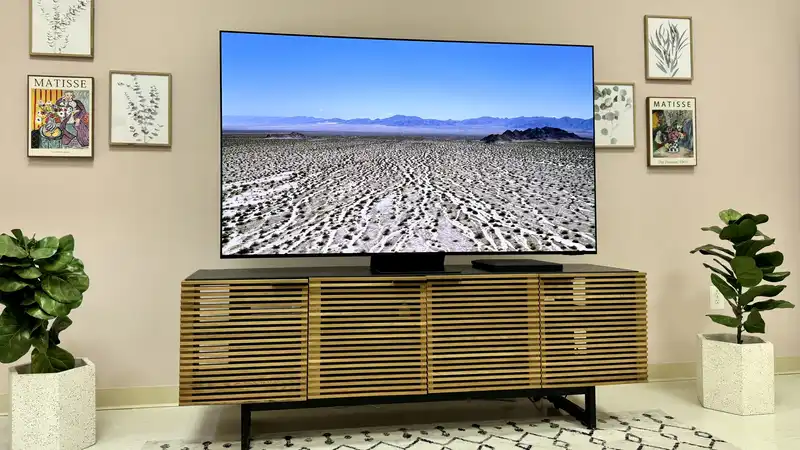Samsung's S95D OLED TV is high on the list as the most anticipated TV coming in 2024. Featuring both a next-generation QD-OLED panel and a new anti-reflective technology that Samsung calls "glare-free OLED," the S95D is likely to be one of the best TVs of the year.
While I have not yet done a full review of the Samsung S95D OLED TV, I spent a few hours with the set and was able to establish some impressions and draw some preliminary test results. This allowed me to get an idea of how it compares to last year's Samsung S95C OLED TV.
Since this TV is currently available for pre-order, you may be wondering if it makes sense to purchase a new screen. Does it have the qualities that are most important to you, or should you skip it and buy another TV? Here's what you need to know.
Samsung has seriously raised the bar for self-luminous technology with the world's first glare-free OLED TV.
Manufacturers have not attempted this in the past because glare-reducing filters can affect the brightness of the panel if they are too thick, which is already often a setback in OLEDs. In the S95D, however, the filter works diligently to disperse light reflections from windows and nearby light fixtures into a paler shape. It's not perfect, but it's impressive.
We took the opportunity to run some preliminary benchmark tests on the S95D and the results were promising. We know that peak HDR brightness is the definitive benchmark for OLED TVs, and this set measured almost 1,800 nits in a 10% window. Last year's S95C had a peak brightness of around 1,400 nits, so this represents a nearly 30% improvement over the previous year.
The S95D covered the Rec 709 color spectrum almost perfectly and offered impressive low input lag; low input lag along with a 144Hz refresh rate makes this OLED TV a solid choice for gamers.
In terms of build, the S95D may not be reinventing the wheel. In fact, it is almost identical to last year's model, right down to the 11-millimeter thin frame. However, it is still a smart design, available in 55-, 65-, and 77-inch sizes.
It features Samsung's One Connect Box attachment for convenient cable management. This feature was previously reserved for the company's top-of-the-line mini LED TVs, but it lends itself very well to OLEDs, as it allows the panel to remain thinner overall. All ports are housed in a separate box for easy storage in a cabinet or in an easily accessible location.
Like other Samsung TVs, the S95D does not support Dolby Vision, so there may be a slight discrepancy between the producer's intentions and the colors of the final image produced.
This is only because Dolby Vision is quite popular in the film industry, but Samsung has never taken the step of licensing it like most of its competitors; for those unfamiliar with the differences between HDR formats, this is not a major drawback, but still important to know Important.
If you're buying a high-end OLED TV, you should expect it to come with a soundbar for the best possible sound performance; in the case of the S95D, the built-in audio is average, so you'll likely want to get the best soundbar available.
OLED TVs in general struggle with sound performance because the panel is so thin, so this is not an inherent setback to Samsung's S95D. Matching a Samsung soundbar is a good way to go, but third-party brands like Sonos or Bose can also be used.
If you can wait a few weeks to purchase a TV, you will have an evaluation review to refer to for more definitive insight on Samsung's S95D OLED TV. But if you're looking to take advantage of Samsung's reservation deal, I think it's safe to say that this set is well worth its price tag.
.









Comments